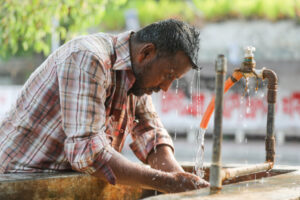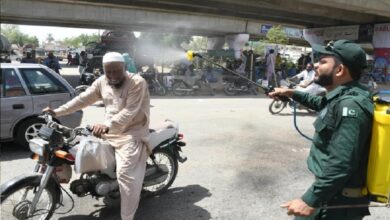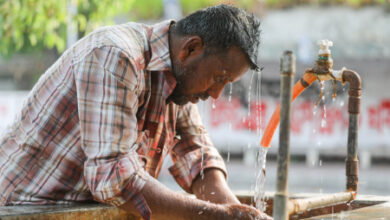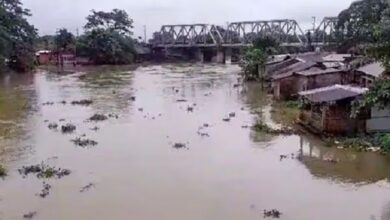As South-East Asia’s heatwaves worsen, researchers are finding ways to cool down cities

As the impact of human-driven climate change worsens, researchers in Singapore are investigating ways to cool down cities and mitigate health risks.
A recent 15-day heatwave swept through South-East Asia, shuttering schools, killing crops and forcing governments to issue health warnings.
A new report said the damaging weather would have been “virtually impossible, even under El Nino conditions” without the impact of man-made global warming.
It’s something that researcher Winston Chow is looking to combat.
He is a Professor of Urban Climate at Singapore Management University’s College of Integrative Studies, and runs the ongoing project Cooling Singapore, which works towards developing climate-resilient solutions to address rising temperatures in cities.
“During the daytime, all these materials store heat, and then it drives temperatures over the course of the day, and especially at night as well.
“In every city, you will find that at night time, because of all the heat that stopped by the urban material is released into the city, it causes this phenomenon called the urban heat island, which drives this additional urban warmth and leads to the state of cities being warmer than your regional surroundings.”
To collect data for the project, Dr Chow and his team developed the Smarty Cart, a tool used to measure how people respond to the outdoor heat of the city.
This allows them to measure fine-scale environmental data that accurately represents how a person feels walking on the streets of Singapore.
“We found that the most important element for outdoor thermal comfort for people in Singapore is that of reducing your exposure to the sun — in other words, finding spaces or shade is extremely critical,” he said.
From there, the team is creating a digital urban climate twin of the city, where policymakers can enter different scenarios into the model.
This way, they can accurately determine whether a policy will help make Singapore more climate resilient.
“We just show the things that can happen, so maybe it’s like looking into a crystal ball, so to speak,” Dr Chow said.
“Hopefully this crystal ball clarifies rather than confuses people, in terms of the right sort of approaches for cooling Singapore.”
Shade, vegetation and better planning
The team has found a few different approaches that could help cool the city.
“When we want to cool down cities, you want to reduce temperatures, and you also want to increase the level of outdoor thermal comfort for people who will you know, live, work and play in cities,” Dr Chow said.
Nature-based solutions are also important, such as green infrastructure, park spaces, rooftop gardens, and community gardens, which can help cool down cities and provide further shade.
“A big reason as to why cities are so hot is that you replace the natural vegetation with that of concrete, asphalt, glass … [then] you add in all the traffic elements as well,” he said.
Dr Chow suggests better planning and introducing early warning systems for heatwaves, so populations and medical professionals can be prepared for the health risks, such as heat stroke.
He said the number of heat-related deaths is more than all other natural disasters combined.
Dr Chow hopes his Singapore-based work can also benefit other South-East Asian countries.
“We have to share this knowledge we have, we can’t just keep it to ourselves,” he said.
“Having information about what works in the context of let’s say, South-East Asia, a hot humid environment, but you always get heat waves in that the worst time of year for us will be in April or May … in places that may not have the same level of resources to cope with heat.”




